I always say that too much money actually makes you stupid. – Barry MolzThese days, many news headlines paint a picture of venture capital and angel investors infusing startups with millions of dollars. The reality, however, is quite different. In fact, the Small Business Administration recently found that only 1% of startup businesses get seed money from venture capitals or angel investors.
Not every business is meant to receive outside investment. So what do the other 99% of businesses do when they are in need of funding to start, grow or sustain their idea? In our third episode of Open for Business, host John Henry first heads to Los Angeles to talk with eBay seller Schad VanLeeuwen and finds out why bootstrapping your business and turning down funding is sometimes the best way to go. John then heads to New York City to discover how one entrepreneur found the money she needed despite having no savings, no credit and no connections.
After hearing all about theses entrepreneurs’ funding adventures, John returns with three key lessons any entrepreneur and small business owner should learn about financing.

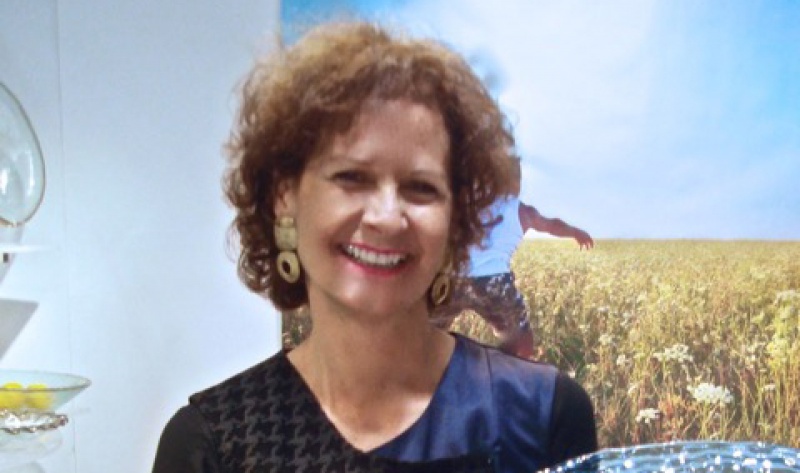
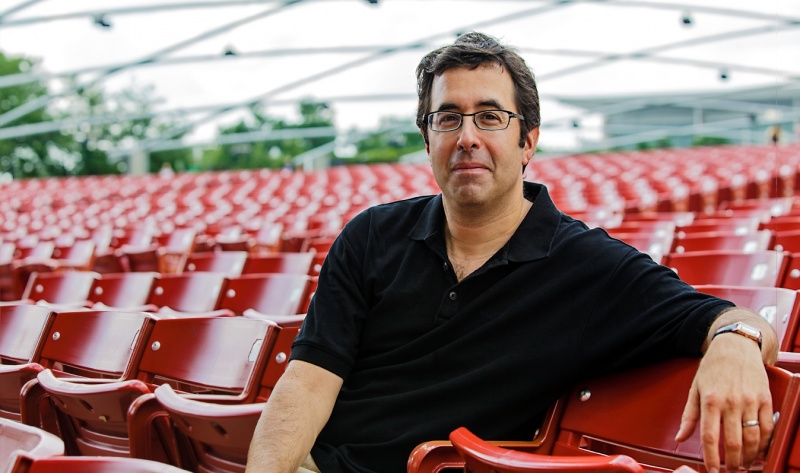

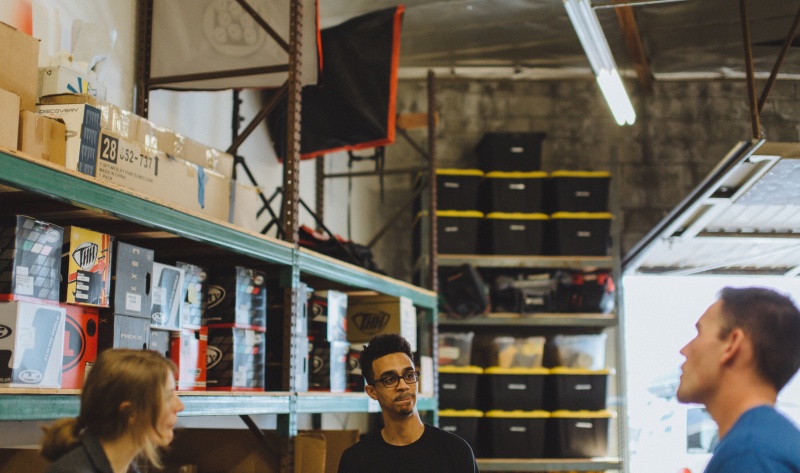
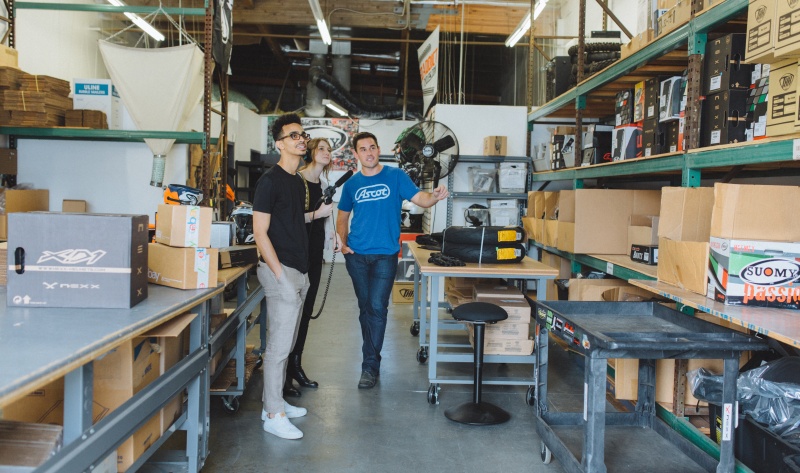
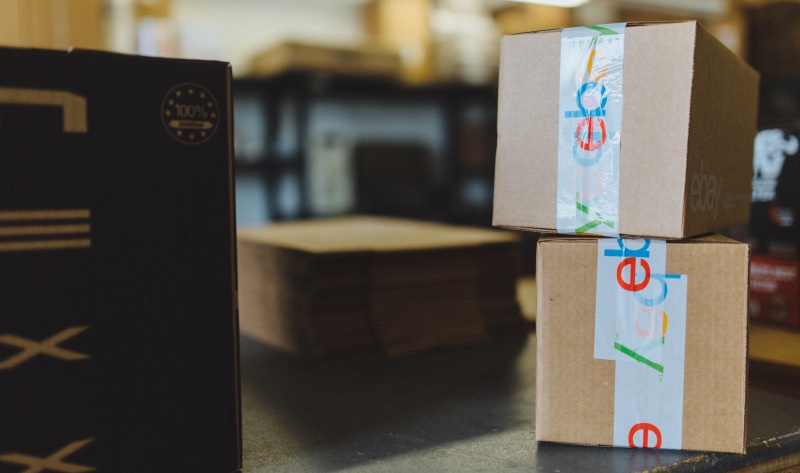
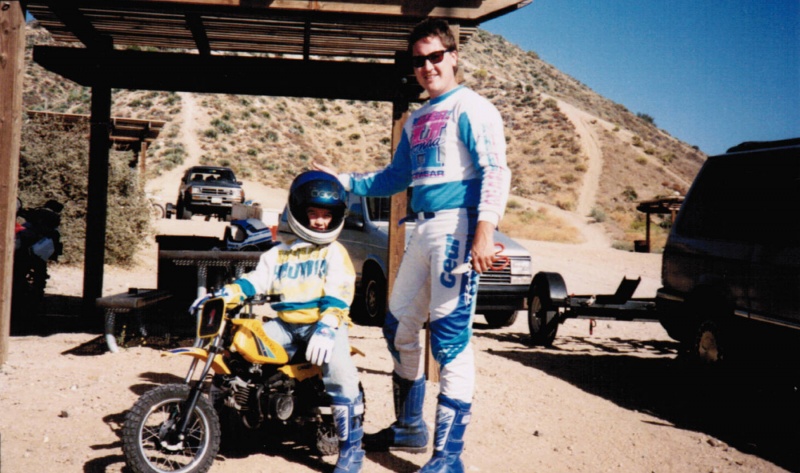

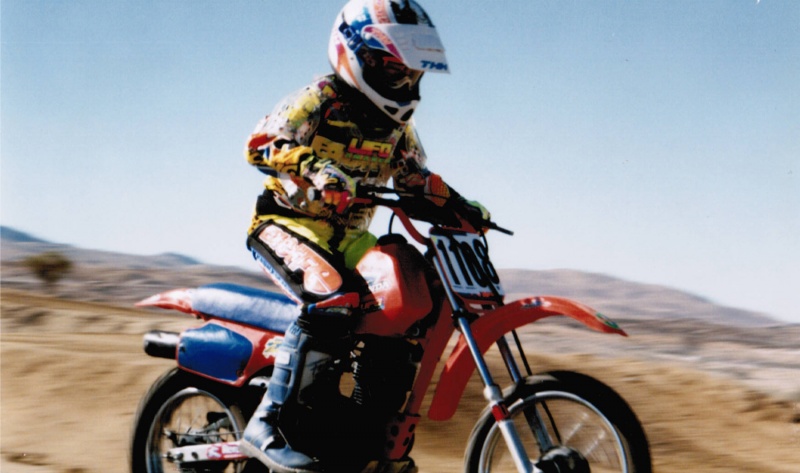
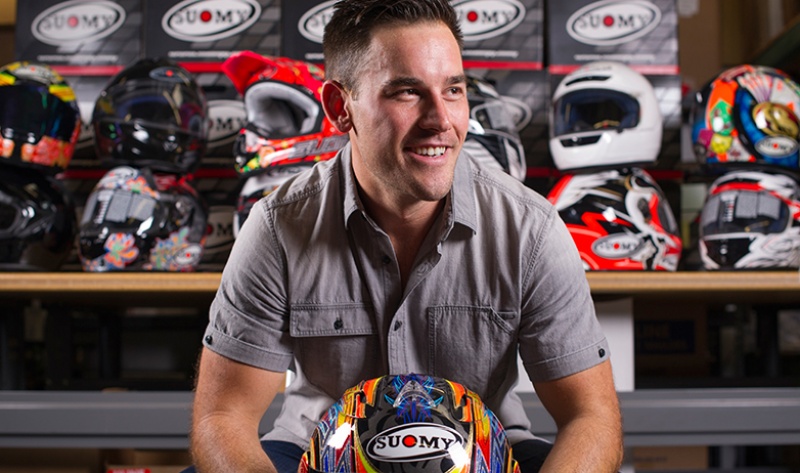
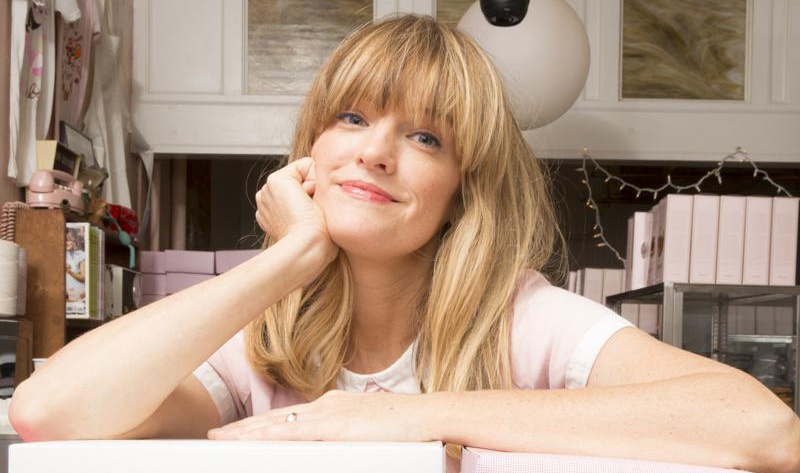
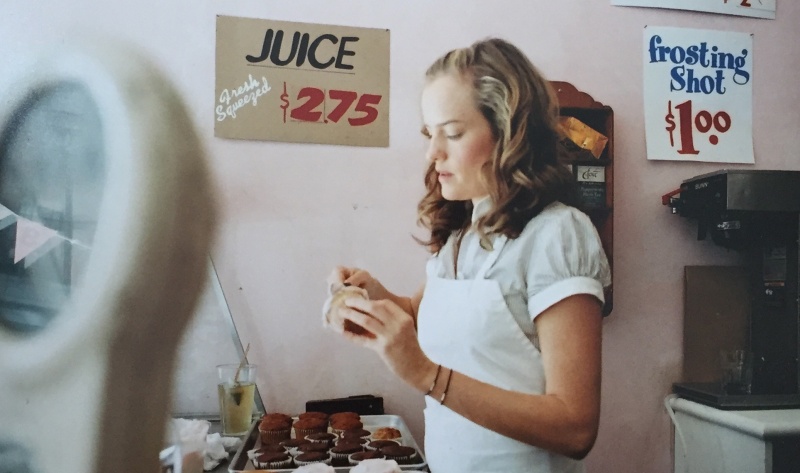
Episode 3: Bootstrapping 101
Featured Guest: Schad VanLeeuwen, Owner - Speed Addicts
Venture capital. Seed funding. Angel investors. In today’s world terms like these are constantly swirling all around entrepreneurs and small business owners. But the reality is that only a small percentage of companies receive venture funding. John Henry explores how regular people find the money to get their businesses off the ground.

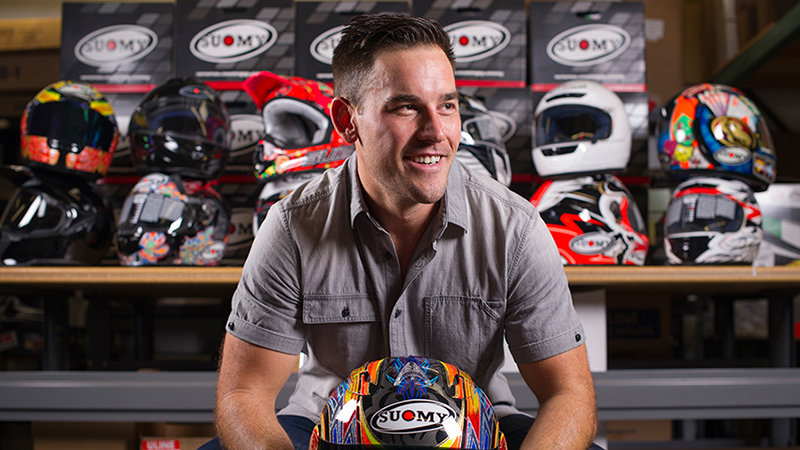
Your Guest
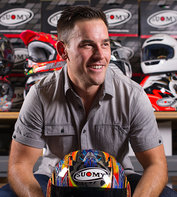
Schad VanLeeuwen
Owner - Speed Addicts
You could say Schad VanLeeuwen was born with motorcycling in his blood. His grandfather had been a national racing champion, and Schad grew up lending a hand in the family parts and accessories business. To help sell some of their old inventory, Schad began listing it on eBay. Soon, he’d started running his own company, Speed Addicts, out of his freshman dorm room in Santa Barbara, CA. Today, Speed Addicts boasts multiple offices, retail space in Los Angeles, and $2.4 million in annual gross revenue on eBay.
Episode Transcript
JOHN HENRY: One night, in college, Annie Morhauser went to a gathering on a beach. That’s where she fell in love.
JOHN HENRY: One night, in college, Annie Morhauser went to a gathering on a beach. That’s where she fell in love.
ANNIE MORHAUSER: I got hooked on glass. It’s sort of like a drug for me.
JOHN HENRY: She fell in love with glassblowing. This was in California in the late 1970’s.
ANNIE MORHAUSER: At a full moon, at night, it was gorgeous, and someone brought a portable glass furnace to the beach for ceramic firing. And, I was mesmerized and I thought, oh my god, I could do that. [LAUGHS] You know, like a bug bit me, and I had to keep doing it.
JOHN HENRY: That night on the beach changed Annie’s life. She decided, right then and there, that glass blowing was going to be how she made her living. But that’s not the kind of thing you just know how to do. Annie had to learn it. She took classes and practiced her technique. When she graduated from college in 1979, Annie got a day job at a gallery in Santa Cruz, and she made glassware in her off hours….
ANNIE MORHAUSER: I’d work at night and on the weekends in my own little studio. I shared it with a painter ‘cause I couldn't afford a whole one, and I would go to a glass shop here that threw away stuff and I would get the freebies, you know, that they threw away. I'd have my little truck and I'd go get it. So at that time I was making more one-of-a-kind platters and bowls, and I was selling them to museum shops, like the Walker Art Museum and the Philadelphia Art Museum.
JOHN HENRY: At this point, Annie was selling her stuff...which was really exciting! But! She had no business expertise whatsoever. Art came naturally to her, not finance. Annie wanted to make a name for herself and keep producing and selling her glassware in bigger and bigger batches. In short, she wanted to start a business. She knew that in the glassblowing world, the only way to do that was to get to this one nationwide trade show. Annie had to be there -- in person -- to get her pieces in front of the buyers from high-end department stores, looking to stock for the holidays. There was only one problem: The tradeshow was in upstate New York. Annie was in Santa Cruz. It was going to cost her hundreds of dollars to get there. And she didn’t have anything close to that kind of money. Luckily for Annie, credit cards had just started letting people take out cash advances.
ANNIE MORHAUSER: And it was like yeah! [LAUGHS] And I didn't know any better, and I'd been making my $13 payment every month for a $3,000 bill, not understanding it wasn't paying anything down. And I was like OK, that’s what it says. Not realizing they were racking up the interest in the credit didn't know how to read the statement, I was so naive.
JOHN HENRY: So, Annie went to the bank to get 300-bucks...
ANNIE MORHAUSER: I just went to the teller and I handed over that credit card and said you know I'd like to get some cash against this card. And she looked at me and she was very stern woman and she looked at the card, looked at me, and then she took out the largest pair of scissors I've ever seen. In fact, don't know where she gets that big and not be gardens shears and she just chopped it up into itty bitty pieces right in front of my eyes
JOHN HENRY: Really?
ANNIE MORHAUSER: And just said no, no we can't do that. In fact, we need to take your card and you owe this much money against it. And I was like no!
JOHN HENRY: I’m John Henry, and this is Open For Business -- a branded podcast from eBay and Gimlet Creative about building a business from the ground up. These days, you see a lot of flashy headlines about venture capital and angel investors infusing startups with millions of dollars. But as familiar as that story is, it isn’t normal, not even close. According to data from the Small Business Administration, less than 1 percent of startups get seed money from either VCs or angels. We don’t usually get to hear much about how those remaining 99 percent of people find the capital they need to launch their companies. Which makes financing especially hard, because most small business owners don’t actually come from a business background. Like Annie, we get hooked on an idea -- and then figure out the rest. Today on the show we’re getting real about how regular people get the money they need to start -- and sustain -- their businesses. Maxing out a personal credit card is one end of the spectrum, and being handed a blank check by an outside investor is another. We’re bringing you stories -- complete with all the nitty gritty financial details -- from entrepreneurs who represent something in the middle. After the bank teller cut up Annie’s credit card, Annie had a last-minute sale and borrowed the rest of the money she needed to get to the trade show in upstate New York. And when she got there, buyers ordered more than $10,000 in her glassware, right there on the spot. It was her big break! Today, you can find Annie’s company -- Annieglass -- in Bloomingdale’s, Neiman Marcus, and Bergdorf Goodman. She’s even got pieces in the Smithsonian. And that bank that cut up her credit card?
ANNIE MORHAUSER: The real irony is that that's my bank — they gave me $2 million later, years later.
JOHN HENRY: What! [LAUGHS]
JOHN HENRY: So, yeah, most of us are more like Annie than Mark Zuckerberg when it comes to starting a business. And that’s okay.
BARRY MOLTZ: Not every business is really meant to have outside capital or angel investors or venture capitalists.
JOHN HENRY: This is Barry Moltz. He’s an entrepreneur, investor, business consultant, and author of How to Get Unstuck: 25 Ways to Get Your Business Growing Again. Barry says that all the hype about million-dollar fundraising rounds isn’t just unrealistic, it’s actually counter-productive.
BARRY MOLTZ: I mean the fantasy always is, I’m gonna have a business idea I’m gonna write it on the back of a napkin and someone is going to give me five billion dollars for that right? And that's going to happen inside of a week. But chances are you're not going to be one of those people. In fact, sometimes I really believe that those examples actually hurt the entrepreneur because that's what they think they're supposed to be doing. That's what they think the model is, and it just isn't.
JOHN HENRY: Barry’s advice to anyone starting a new business? Bootstrap it. In some ways, the lore and romanticism around bootstrapping is similar to the glamour around raising huge sums of money. If you’ve talked to a business owner who truly bootstrapped, they tend to be really proud of it. That’s because it’s super hard. Technically, to ‘bootstrap a business’ means to refuse bank loans or outside investment. It means using as much of your own capital as possible to start your company, and then only growing that company when you have the profits to do so. That’s how Schaad VanLeeuwen did it...
SCHAD VANLEEUWEN: Thank you, sir. Have a good one. Take it easy bud. You guys got to witness a very rare cash transaction that happens here.
JOHN HENRY: Schad owns Speed Addicts, a motorcycle parts store. He does almost all of his sales online and he works out of a small warehouse on the outskirts of LA.
SCHAD VAN LEEUWEN: Half of this place is packaging supplies. And then most of what you’ll see here is helmets, because that’s our bread and butter. So lots of helmets on the shelves here, returns.
JOHN HENRY: The thing that feels weird about visiting Schad’s warehouse is that One: it’s tiny. And two: there’s barely any inventory on the shelves. And yet, he’s selling almost 2-and-a-half million dollars of motorcycle parts a year. That’s because Schad uses a business model called drop shipping. Here’s how drop shipping works: Schad lists motorcycle parts on the Speed Addicts’ website. Once someone buys an item from Speed Addicts, Schad pays a wholesaler to ship the part directly to the buyer. It keeps overhead low and means Schad has cash in-hand before he even goes to his wholesalers. But drop shipping isn't perfect. There's lots of competition, the margins are razor thin, and if you don't calculate them correctly, you risk losing money. Schad has been refining his drop shipping model for the last 15 years. The first wholesaler Schad ever worked with was his dad, who runs a motorcycle parts wholesale business. He started selling for his dad while he was still in highschool.
SCHAD VAN LEEUWEN: I'd get my dad's company to run the credit card for the sale. And I remember specifically my first couple of sales, and taking credit cards over the phone between classes at high school, on my Nokia Phone, that had Snake on it, you know, the Snake game. So, I remember being, the bell's ringing, and I somehow managed to just sound professional enough, as like, the bell's ringing, it's time to go to class.
JOHN HENRY: Drop shipping is what allowed Schad to bootstrap his company...
SCHAD VAN LEEUWEN: Because of the dropship model where I could list a product that I didn't actually have in my possession, on eBay, sell it, collect the money, and then pay my supplier, I never took a dime or went after money in the beginning because I didn't have to.
JOHN HENRY: What I find fascinating about that is that, typically when you think of financing, it's in the lens of people giving you money, but in this case, it was like, finding a creative way to keep your costs low and so, that in a way was a type of financing because it eliminated, or at least reduced that barrier to entry. Like you didn't need the money up front. Is that right?
SCHAD VANLEEUWEN: For many years Yeah.
JOHN HENRY: This brings us to lesson number one. Here’s Barry again.
BARRY MOLTZ: The most important thing in any business is to get paying customers. Once you have paying customers it gives you capital actually from your customers which is the best source of capital.
JOHN HENRY: Customers are your best source of capital. If you can, find a way to create a sustainable business by selling your product or service, first. Then, use those profits to fund and grow your business. Prove there’s a market for your idea -- something people are willing to pay for -- before you even think about taking outside funding. This might seem obvious, but putting it into practice can force you to get creative in how you think about your business. Ask yourself, what is the most barebones version of your company that you can possibly launch? For Schad, that’s been drop shipping ever since he started out. And this was working well for him, until recently. A couple years ago, Schad learned that bootstrapping could only get him so far. It took watching a competitor thrive for him to realize that he wanted to scale his company...
SCHAD VAN LEEUWEN: I 'd been working way too many hours, and then I saw that one of my competitors sold for $300 million. And I was so bummed. I saw these guys, like my age sell this company, and that's like, that was my dream! That is my dream. I want a company, I don't necessarily even want to sell it, I want to be a company, I want to be one of the players. They're obviously one of the players, they accomplished this huge thing, it was like, yeah, it hit me pretty hard.
JOHN HENRY: After that moment, Schad spent a year deciding on his next move. He hired a consultant and drew up a business plan for the first time. He decided the first step was to overhaul Speed Addicts website and in order to do that, he’d have to borrow money for the first time.
SCHAD VAN LEEUWEN: I started going, I have a financial advisor, I have x-amount of dollars in the stock market, I'm betting on these other companies. Like why am I so scared to put this money on myself? And so, there's been a turning point where I'm confident in my abilities, I'm confident in this business plan, let's do it, you know let's make some bets, and that's where we're at today.
JOHN HENRY: The difference between taking money now versus 15 years ago, is that NOW Schad has a proven concept, and he knows how to run a business. He knows exactly how much money he needs, and what he wants to spend it on.
Just a few months ago, Schad took on $50,000 of debt to hire a developer and redesign his website from scratch. For a company with $2.5 million in sales each year, Schad could’ve taken out way more, but he didn’t. Here’s Barry.
BARRY MOLTZ: I always say that too much money actually makes you stupid. You should only try to utilize as much money as you need. It's not borrowing as much money or getting as much investors as you can. That’s really the secret sauce of running a successful business.
JOHN HENRY: Lesson number two: wait as long as possible to get outside funding. And when you finally do, be strategic. Don’t be tempted to take as much money as you can and decide what to do with it later. Be methodical about what money you actually need, in order to accomplish specific goals. But, for most people, having too much money isn’t something they have to worry about. Usually, it’s just the opposite. After the break, we’ve got a story about where to turn when you’ve got no savings, no credit, and no connections. All you’ve got is a bunch of food allergies, and a million dollar idea.
JOHN HENRY: Welcome back to the show. At around the same time Schad was first running Speed Addicts out of his college dorm room, Erin Mckenna had just moved to New York City to pursue her lifelong dream of working at a fashion magazine. But she hated it. She hated sitting at a desk all day and on top of that, Erin had just been diagnosed with a TON of food allergies. She couldn’t eat soy, dairy, or gluten. These days, that’s not that big of a problem. But back then, it meant giving up something Erin really loves: sweets.
ERIN MCKENNA: I was really unhappy on a daily basis and I didn't have any friends in New York and I was really missing sweets at the same time. And so I, at night kind of to keep myself company and to get my mind off my life I would just bake for myself. They were all like really weird things I would never share with anybody because they were just like --
JOHN HENRY: This was before all the gluten-free trends?
ERIN MCKENNA: Oh, yeah, I mean nobody knew how to say gluten free. They thought it was glutton free and they thought it was like a diet product, like it’s diet, it’s glutton free, get 2, get 5.
JOHN HENRY: Like, what kind of stuff were you baking?
ERIN MCKENNA: It was kind of like what you would you expect gluten free and vegan to be, like, just like lumpy lumps of sweetness. That for me, I was like, well, I guess it’s OK. I'll eat it.
JOHN HENRY: Erin spent eight months baking cookies, cakes, and brownies in her own kitchen just for herself with random ingredients that she’d find in health food stores in New York City, like chickpea flour instead of regular flour and agave nectar instead of sugar. One day, Erin went to a birthday party for a friend’s baby and that’s where she realized, she wasn’t alone in her food allergies
ERIN MCKENNA: It was his first birthday party and she said, Oh everybody I'm sorry. I hope this cake doesn't taste weird. It's a baby cake. And I was like, what's a baby cake, and she's like, well, there's like certain things you're supposed to avoid in the first year like eggs and dairy and et cetera. And I said oh my God! You know what somebody should do is open a bakery called BabyCakes and make it free from all these allergies for all these kids running around. And then I just thought it was the best idea.
JOHN HENRY: Such a good idea that despite having no formal cooking experience, no business experience at all, and no money, Erin decided she was going to start that bakery. And she was going to call it BabyCakes NYC. This is when she got really serious about perfecting those recipes in her kitchen. She was no longer working at the fashion job she hated. She was waitressing at night and using all her pay on ingredients. She was driven, passionate and she’d even identified a market for potential customers. But she was missing one major thing…
ERIN MCKENNA: So nothing ever scared me. But money was the one thing that I ever really experienced a block with.
JOHN HENRY: Mm. Talk about that.
ERIN MCKENNA: I come from a family of 12. We all got jobs early in life, as early as possible. We went off to college with like -- my mom gave me 100 bucks and I was like psyched. And we just figured life out on our own. So something that came with that was I had always had a problem asking my mom for money because I knew she was under a lot of pressure already with you know all the family finances. And so I wasn't in the practice of even asking my own mother for money.
JOHN HENRY: Right.
ERIN MCKENNA: So money to me was always it was like up to me to find it or up to me to to earn it. Erin knew she had a lot to learn about finding the money she’d need to start a business. Remember this was back in 2003. She didn’t even have a computer at the time. So, she’d go to the library and read about how to finance a small business. She found a mentor through the Small Business Administration, and that’s how she came up with her first business plan. She estimated she’d need a hundred thousand dollars to get the space, equipment and permits she needed to get started. And so, she applied for a bank loan...
ERIN MCKENNA: So I put in my application. It takes like two weeks to -- they take about two weeks to review
JOHN HENRY: The longest two weeks of your life, right? I remember those.
ERIN MCKENNA: Yeah. Oh my God.
JOHN HENRY: Erin thought she was in great shape to get the loan. And while she was waiting for the loan to be approved she happened upon the perfect spot for her store. It was in an up and coming neighborhood in Manhattan, it was way cheaper than she’d even budgeted. She was feeling so confident that she was going to get the loan that she went ahead signed the lease. Everything felt like it was coming together, until it wasn’t.
ERIN MCKENNA: I believe it was maybe five days later I got the call that I was turned down for the loan.
JOHN HENRY: Oh, no.
ERIN MCKENNA: I had been in the grocery store grabbing ingredients because I was going home to you know make another batch of things cause I was always refining things like teaspoon by teaspoon. And I saw that I had a missed call and voicemail and yeah and I picked it up and it was really it was short. It was like less than a minute long.
JOHN HENRY: Ouch.
ERIN MCKENNA: Now we're calling in regards to this application
JOHN HENRY: It was like so clinical for him.
ERIN MCKENNA: Yeah, oh absolutely. I was like, Do you realize you just delivered the worst news of my life? I felt dizzy and a little bit sick. My whole like, everything just started to like I don't know it felt like things started to come in on me.
JOHN HENRY: Once she was denied for a loan, Erin was left with no choice but to do the thing she dreaded most: ask people for money.
ERIN MCKENNA: I didn't want people to think that I was grubbing for money all the time because because I had spent my whole life trying not to be that person and not ever asking for money is just like one of my purposes in life.
JOHN HENRY: But Erin started asking for money anyway, because she had to. And she had to do it in a way that was totally new to her: finding investors and selling them equity. Equity is ownership in a company. She’d go from meeting to meeting, investor to investor, with a bunch of baked goods and a print out about why her bakery was a good bet. But these were not the type of people you might picture when you hear the word “investor” -- they were friends of friends. People she met through her waitressing job. Like a random vegan Canadian hockey player who said he’d throw in a few grand. And like Phil, her tax guy.
ERIN MCKENNA: He had mentioned that he had might want to invest if I ever was taking investors and it came to the time where I actually had to ask him if he would. And he was -- he wasn't certain. And I had to keep pushing it. And for me, I'm the type of person, like I don't want people feel to uncomfortable.
JOHN HENRY: Yeah
ERIN MCKENNA: I'm like oh, don't worry about it, don't worry about it, don’t worry about it. I’ll find it you know somewhere else. Don't worry about it. But I had to like hold that back and and just pursue it. And then he finally said, yes I'll put it in 12,000. And I met him in Grand Central on his lunch break and we are across from each other and he is holding this check and he was sweating and he told me he's like my wife really doesn't want me to give this to you. And I, I was like oh my God. Now there’s a wife who’s not wanting to do this! I'm so screwed. And I, I really had to hold myself back there from telling him it was going to be okay just keep the money. And I was I just said I really think it's a good investment. I think he should give me the money everything's going to be okay. And, and then here's what he had it on the table and the like pull it away from him and I ran to the bank and cashed that check so fast because I'm like he going to put a stop payment on this right when he gets the office.
JOHN HENRY: In the end, Erin managed to get the capital she needed by selling 18 percent of the bakery to a handful of investors -- the average investment was about as much as Phil’s: $12,000. After bootstrapping, there are two main ways to finance your business. One is trying to get a bank loan. Another is courting investors. Erin did both. And both have their own risks and costs. Bank loans are a high-risk way to get capital. Because if your business fails, you're still on the hook to pay the money back, no matter what. But -- and this may sound counterintuitive -- even considering the interest you have to pay back on a bank loan, in the long run, it’s actually a much cheaper way to fund your business. And that’s because giving up a piece of your business by selling equity cuts into your future profits forever.
BARRY MOLTZ: Although you don't have to return that money, you do have to return it if and when your business is successful.
JOHN HENRY: Barry Moltz.
BARRY MOLTZ: They're actually taking a part of your business. So that could end up being, 100, 200 percent or 500 percent actually return for that investor. So, selling equity in your business although you don't have to pay it back -- actually, in the end if you're successful, it’s very expensive. If you fail, then it's very cheap ‘cause you don’t have to pay it back.
JOHN HENRY: Compared to a bank loan, selling equity is a low-risk, high-cost form of capital. Sure you don’t have to pay it back if your business fails, but if it succeeds you’re giving away your profits in perpetuity. And that’s our third lesson. When it comes to financing your business, you have to carefully weigh the risks and costs of the types of funding available to you. Erin grew the company and recently renamed it Erin McKenna’s Bakery. She has a whole line of cookbooks, and she sells her vegan, gluten-free products online. Today, Erin’s business employs 75 people and is worth about $6 million. Turns out, she did Phil a favor when she cashed his $12,000 check, because right after she opened, lots of people wanted in.
ERIN MCKENNA: There were people who were coming to me after I opened because we got all this great press after I open I was on Martha Stewart within six months. Best of New York. And then people were coming out the woodwork trying to give me money and I was like Hell no. I was like you slept on that. No thank you. Go into the corner. No thank you.
JOHN HENRY: You were return their money?
ERIN MCKENNA: Oh I had someone send me a check which I returned.
JOHN HENRY: Bam.
JOHN HENRY: One final takeaway from Erin’s story -- and this is something that feels personal to me -- is that there was nothing in Erin’s background or her work history that made her a shoo-in for success. She had to learn how to finance her business on her own. Which was really, really hard, but also, totally worth it.
ERIN MCKENNA: Everyone is like oh my god they're sleepless nights and. And it's so exhausting and this and that and they tell you the horrors of it which is there are horrors but they leave out like the unexplainable like beautiful part. You don't know it until you experience it like you get into it and it's hard. Yes. And you're suffering. Yes. But you would never do anything else. I never, I never felt -- I never dreaded work. I haven't dreaded work since the day I opened the bakery.
JOHN HENRY: That’s amazing.
ERIN MCKENNA: I never dreaded going in.
JOHN HENRY: One thing that we share in common with our stories is like that coming from a bigger family and growing up broke. And I just remember in those days it feeling like a curse. Now looking back on it it was totally like a blessing
ERIN MCKENNA: The best thing in your whole life because you know how to be poor now.
JOHN HENRY: We're not afraid of it at all.
ERIN MCKENNA: I know how to do it, like I know. Like just make my bills and then whatever is left over is for you to eat.
JOHN HENRY: Exactly
ERIN MCKENNA: Like maybe go to the movies, and it's fine. Then, any time you have anything excessive that it's like --
JOHN HENRY: Pressure makes diamonds.
ERIN MCKENNA: Yeah absolutely.
JOHN HENRY: So, to recap today’s lessons on how to finance your business: Lesson number one: If at all possible, bootstrap your business in the beginning. If you can, find a way to create a sustainable business by selling your product or service, first. Then, use those profits to fund and grow your business. And remember, customers are your best source of capital. Lesson number two: When you’re seeking outside funding take only exactly what you need. Don’t forget Barry Moltz’s motto: Too much money makes you stupid. Lesson number three: Weigh your options. Every form of funding has its own risks and costs. Know which is best for your business, even though sometimes you don’t get to decide. That’s our show! To learn more, check out ebay.com/openforbusiness. Open for Business is a co-production of eBay and Gimlet Creative. We were produced this week by Frances Harlow, RMW, Nicole Wong, Katelyn Bogucki, Abbie Ruzicka, and Grant Irving with creative direction from Nazanin Rafsanjani. We were mixed this week by Zac Schmidt. Our theme song is by Vulfpeck. Thanks so much to Christine Driscoll. And a very special thank you to Victor Chicero, Eric VanLeeuwen, Steve Denis, Mike Michalowicz, and all the folks at Kiva who helped us out. Next week on Open for Business, what to do when it feels like everything is falling apart and how to rebuild once it does.
SY: The doubts that are honestly always at the back of my mind, and I think if someone is honest anybody who’s in a startup, one of the doubts is just, am I on the deck of the Titanic, you know? The ship is sinking, nothing’s going to stop that and am I just like rearranging deck chairs? Because you never really know if your startup is successful until it’s successful.
We’ll hear from two entrepreneurs about how to survive failure. That’s coming up next week on Open for Business! If you like what you hear, please subscribe to Open For Business on iTunes or wherever you get your podcasts and leave us a review! It really helps people discover our show. I’m John Henry. Thanks for listening.
Topic: Commerce













